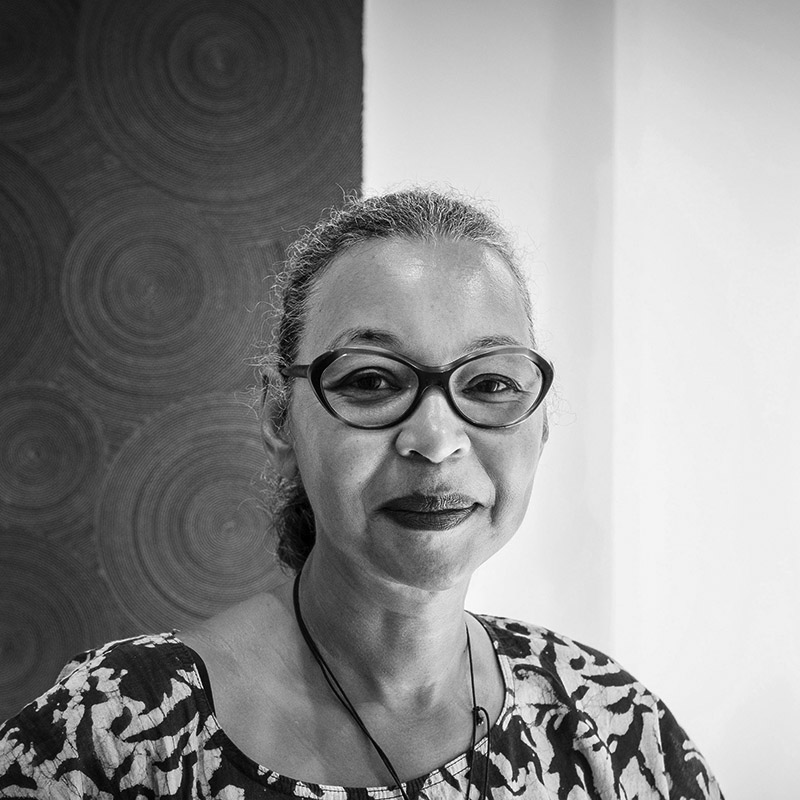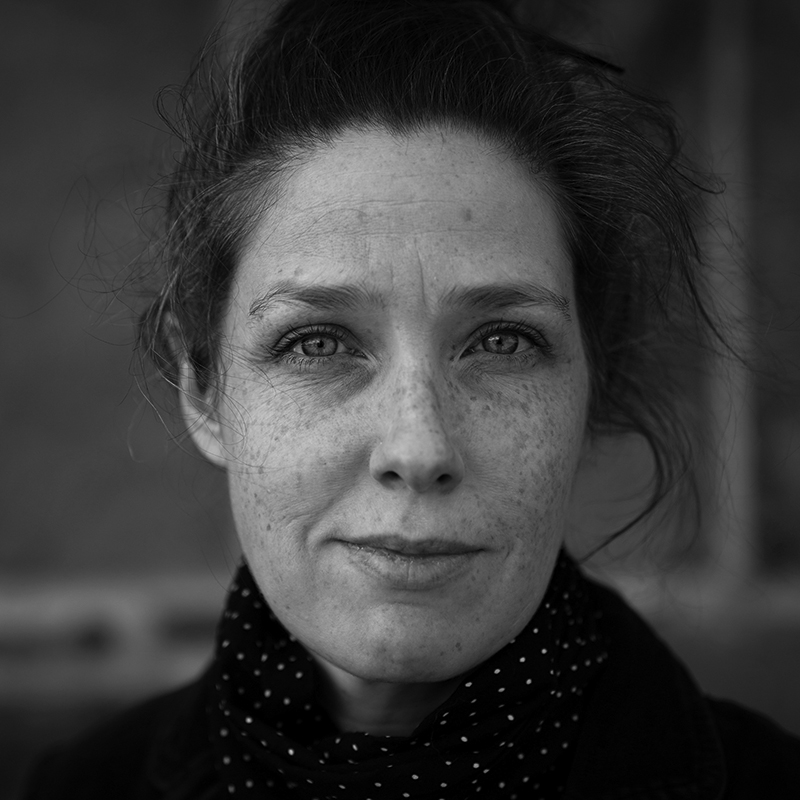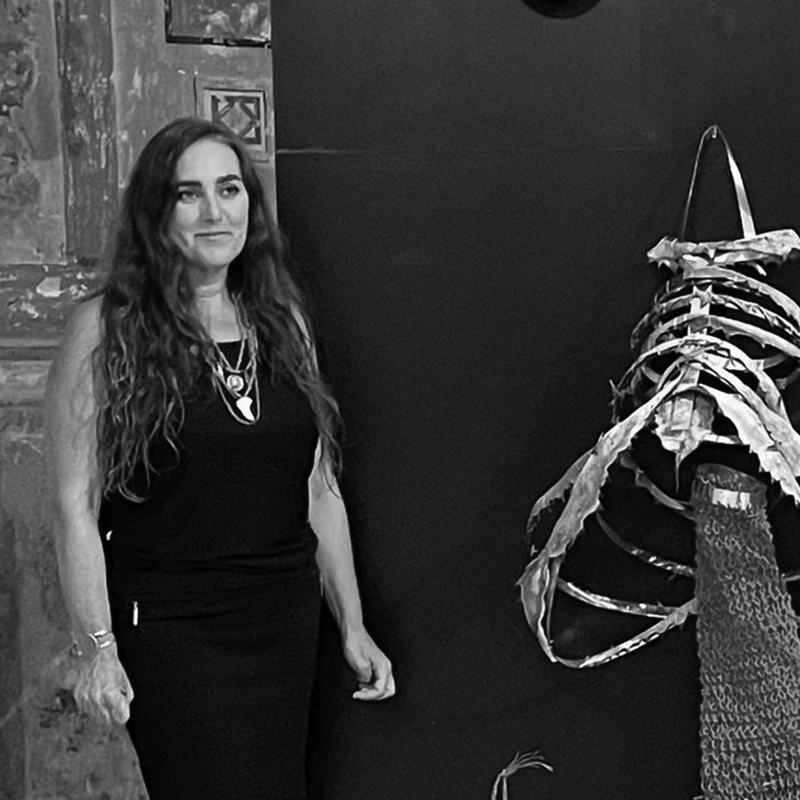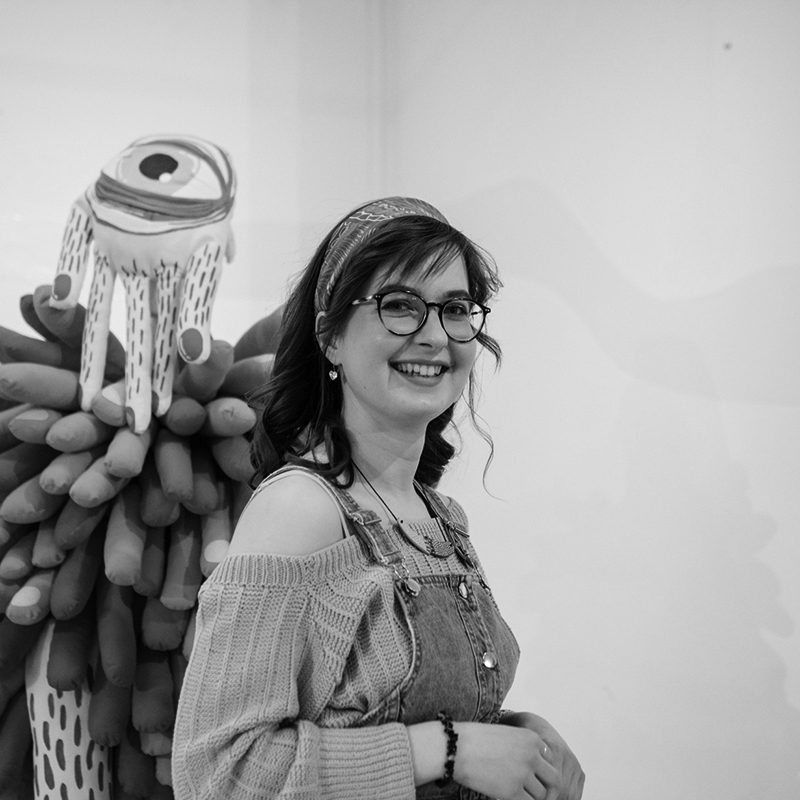ARTISTIC
RESIDENCIES
9 ARTISTS | RESIDENCIES 8 SEPTEMBER — 12 OCTOBER | EXHIBITION 12 OCTOBER — 15 DECEMBER
OPEN CALL
Angeles Jacobi
Noriko Tomita
MAGIC CARPETS
Claire Amiot
Flávia Vieira
Laura Besançon
BILP
Marie-José Gustave
Mylene Michaud
PICE
Susana Guerrero
EFFEA
Nikolina Krstičević
Artistic residencies take center stage in the 7th edition of CONTEXTILE. A total of nine artists will be creating in Guimarães during the event. It is the first time this has happened, amplifying the possibilities for dialogue between the different creators selected and the artistic community that the Biennale has nurtured.
The Artist Residency period begins on September 6th, at the start of CONTEXTILE 2024’s inaugural weekend, and runs until October 12th. On that day, takes place the opening of the exhibition resulting from the creation process of the artists Angeles Jacobi (Argentina), Noriko Tomita (Japan), Susana Guerrero (Spain), Nikolina Krstičević (Croatia), Claire Amiot (France), Flávia Vieira (Portugal), Laura Besançon (Malta) and Marie-José Gustave and Mylene Michaud, both from Canada.
These creators were chosen through both an open call and CONTEXTILE’s partnerships with the Biennale Internationale du Lin de Portneuf (Canada), the European platform Magic Carpets and the PICE (Internationalisation of Spanish Culture) and European Festivals Fund for Emerging Artists programmes.
Open Call
Angeles Jacobi
ARGENTINA
Angeles Jacobi, born in 1989, is currently living in Buenos Aires, Argentina.
Her work explores the relationship between tradition and new technologies, the importance of labor, the significance of art, and the ephemerality of existence. Using knitting and embroidery as her main media, Jacobi incorporates mechanisms that allow her pieces to slowly unravel over time.
I discovered my unique approach to art through a simple mistake while embroidering—an error that led me to backtrack and unravel my work. This act of unraveling fascinated me, and now I create textile installations that unravel themselves with the help of a motorised mechanism.
Through the unraveling process, I invite viewers to reflect on life’s intricacies and the passage of time. By blending traditional textile techniques with contemporary methods, I bridge the past and present, revealing hidden stories and symbols.
PROJECT
“When Ends Meet” is a textile and kinetic installation that engages local communities in adding printings to knitted pieces. The goal is to infuse the artwork with Guimarães’ culture by printing people’s stories directly into the fabric.
In the exhibition, a motorised mechanism will slowly unravel the knitted pieces—symbolising themes of separation and touch. This process represents the cyclical nature of parting and reuniting, reflecting life’s intricate patterns. The installation becomes a tactile expression of shared narratives, inviting viewers to explore the connections and disconnections that shape our lives.
Open Call
Noriko Tomita
JAPAN
Noriko Tomita is a fiber artist based in Tokyo, Japan, where she was born and raised.
Since completing her Master’s degree in Textile Design at Tama Art University in 2010, she has exhibited at domestic and international triennials/biennials within spheres of textile, fiber, and contemporary art. Main exhibitions include Echigo-Tsumari Art Triennale (Japan, 2022), “Textile Art of Today” (Slovakia, toured Hungary, Czech and Poland, 2018- 19) and 5th Riga International Textile and Fibre Art Triennial (Latvia, 2015).
PROJECT
Familiar materials like everyday items have been a fixation in my practice, as they clearly reflect the aesthetic sense and ways of thinking of a country. Everyday items might seem uninteresting to locals but could be extraordinary to outsiders. My encounters with materials in daily life have led me to pursue “the definition of textile creation” outside its usual boundaries of common textile production such as weaving and knitting.
Considering the theme “TOUCH”, I thought about “Things I still want to touch” and “Things I don’t want to touch anymore”; these could be replaced with “Things I can’t throw away” and “Things I want to throw away”. Referencing “Lovers’ Handkerchiefs”, a lost custom of this region, these handkerchiefs are no longer a necessity and are “used”, yet they will not be discarded. While “Trash” are things that lose value along with their functionality, “Things that cannot be thrown away” regain value by recalling our feelings for them.
BILP – Biennale Internationale du Lin de Portneuf
Marie-José Gustave
CANADA
b. 1963, Paris, France.
Lives in Longueuil, Quebec.
From her training in garment production, she has retained a taste for form and volume. She creates paper works using knitting, crochet and basketry techniques. Universality, transmission and identity are the themes that underlie her practice.
Marie-José has received grants from SODEC, the Canada Council for the Arts and the Conseil des arts et des arts et des lettres du Québec. She has participated in group and solo exhibitions in Canada, France, the United States Uk and Poland.
PROJECT
In this digital age, where machinery and software are replacing the human hand, my practice is exclusively manual. It is closely linked to the object and to craftsmanship. In this project, I approach the theme of “Touch” through the prism of tableware, the container we touch every day in a comfortable and reassuring ritual. The container plays a part in social relations. It is a tool for preservation, and symbolically a means of sharing and passing on our traditions, heritage and cultural identity.
The series of sculptures, inspired by local tableware, is made from recycled paper pulp and straw basketry.
By transforming ordinary utilitarian objects into works of art, I question our perception of everyday objects and the value we place on them. I also question what we leave behind. What heritage are we passing on? It’s also a way of honoring the value of these universal objects.
BILP – Biennale Internationale du Lin de Portneuf
Mylene Michaud
CANADA
b. 1980, Quebec city, Canada.
Lives in Quebec city, Canada.
Bachelor’s degree of Fine Arts at Université Laval, Québec (2004). Technical degree in crafts, structure textile option, Maison des métiers d’art de Québec, Québec (2011). Textile artist, she mainly uses digital knitting to create unique large-format pieces.
She participated in group and solo exhibitions in Canada and France.
PROJECT
My creative project involves translating satellite images captured from the web into knitting. Through the representation of territory and the exploration of data transfer from one form to another, my research questions the relationship individuals have with the virtual and the real in the digital age. The geographical coordinates of the location hosting the creative residency in Guimarães serve as the starting point for an exploration of the territory conducted using the online application Google Earth. I undertake a reconnaissance by navigating in aerial view in search of details that stand out for their formal, chromatic, or symbolic interest. The selected image is converted into jacquard knitting sections using a domestic electronic knitting machine. The knitted sections are hand-assembled to reconstruct the original image. The stitch is approached as a pixel in a 1:1 ratio, resulting in a large-format work that highlights the similarity between the pixelation of the digital image and the network structure of the fabric.
Magic Carpets
Claire Amiot
FRANCE
French artist born in 1994.
After studying art history and archaeology, she entered the Ecole des Beaux-Arts and obtained her DNSEP in Nantes, 2019.
Lives and works in Nantes. Has a studio with the Collectif Bonus (Nantes city workshops).
Exhibited in several group and solo exhibitions in France, the United States and Japan. She is the winner of the Prix des Arts Visuels de la ville de Nantes 2022.
PROJECT
Textile is a very tactile material.
It has a direct link with the body, covering it, caressing it.
It may seem so alive that it can exalt movement.
What interests me in the notion of “context” are the geographical, historical and social dimensions. My way of touching, of coming into contact with the context, will be to draw the resources and materials for my project directly from the site: the colours, the textiles, the stories. An investigation into how fabric can become a place of memory.
A material that lets personal, intimate experiences speak for themselves.
A surface that tells a collective and universal story about the landscape. What interests me is the ambivalence expressed by the gesture of “pooling” in a single object these fabrics in which traces of multiple individual experiences have been imprinted.
Like stories, fabric is an object that circulates and becomes imbued with the present. It’s a material that lives through our bodies, our emotions and our experiences.
We have an interdependent relationship with textiles, just as we do with the landscape or the people around us.
Magic Carpets
Flávia Vieira
PORTUGAL
Born in Portugal, 1983, lives and works between Porto and São Paulo.
Using textiles and ceramics in an installation context, her work develops from the cultural, historical and political narratives inherent in the craft process, exploring notions of identity, memory and collective representation, botanical diaspora and otherness.
With a degree in Fine Arts from the University of Porto, a Master’s degree in Communication and Arts from the Faculty of Social and Human Sciences of the Nova University of Lisbon and a PhD in Visual Poetics and Processes of Creation from the Institute of Arts of Unicamp in São Paulo, Brazil, the artist exhibits regularly in Portugal and abroad.
PROJECT
The project develops from the history of plants in the textile context in northern Portugal and how they mirror historical, cultural and geographical overlaps. More specifically, the aim is to work out how the aesthetic representation of linen and cotton (through the production of fabrics and embroideries) is the result of geographic overlaps and intersections that unite the local and the global. As opposed to the cotton that led the Industrial Revolution and participated in a more accelerated and capitalist production format, linen is characterized by a more local, slow, sustainable and family-oriented way of making things. These two approaches, which currently coexist in textile material production, not only bring different results in the formalization of the fabric and the iconography of the embroidery, but also have different symbolic values.
Magic Carpets
Laura Besançon
MALTA
Laura Besançon (b:1993, Malta) graduated with an MA in Photography from the Royal College of Art. Central to Laura’s multidisciplinary practice are notions of play, connectivity, and place, explored through a playful approach that often utilizes various communication tools as part of the process. Recent exhibitions include the Izmir Mediterranean Biennial 2024 and Maltabiennale. art 2024.
PROJECT
This participatory project with Guimarães residents will explore profound connections between people and their textile objects. Through intimate one-on-one interactions, residents will be invited to contribute textiles imbued with personal significance, transforming these items into vessels of personal history and touch points for understanding individual and collective experiences. The process intends to transcend mere collection, evolving into a shared exploration of meaning and memory. The anticipated outcome will feature both the textiles and photographic work, with the final installation showcasing these items and the project’s relational essence. Participants will be invited to meet and share their stories at the exhibition, encouraging visitors to join in and create an ongoing dialogue. By focusing on the tactile quality of textiles and the personal narratives embedded within, the project invites viewers to engage with the rich textures of both material and memory.
PICE
Susana Guerrero
SPAIN
Guerrero has a PhD in Fine Arts and is a professor at the Miguel Hernández University. She is
represented by 532 Thomas Jaeckel Gallery in New York and Casa Bancal. She has obtained art scholarships in Greece, Mexico, Germany and Italy. She has had exhibitions in galleries, art fairs and museums in the United States, China, Colombia, Cuba, Dominican Republic, Guatemala, Morocco, Germany, Mexico, Poland, Italy, India and Spain. Her works are found in collections, highlighting the Marieluise Hessel Collection of Contemporary Art NY and the Norlinda and José Lima Portugal Collection. She has collaborated in short films, flamenco and contemporary dance.
PROJECT
Susana Guerrero built a contemporary mythology that places physical reality, the material of dreams, the subconscious, the magical, the visible and the hidden at the same level. To do this, she carries out an emotional archeology, a ritualization of the everyday and the domestic. Through metaphorical strategies she reformulates ancient mythologies that are inserted into her work, along with her personal experience of the sacred. Her creative methods, which address disciplines such as drawing, sculpture, textiles or engraving, are based on the importance of ritual in the creation process; the genealogy of the materials used, their origin, collection and selection, their poetic and symbolic root. A union of reason, imagination and intuition.
EFFEA
Nikolina Krstičević
CROATIA
Nikolina Krstičević is an artist from Croatia, a graduate of Textile Design at the Faculty of Textile Technology in Zagreb. She exhibited at various group exhibitions and had three solo shows. She exhibited at the XIV Triennial of Croatian sculpture and biennial of textile arts Bien in Kranj. She also participated in the Briefing on Soft Arts program of the Center for Fashion and Clothing Research in Zagreb (CIMO). She is a member of Ulupuh, a Croatian Association of Artists of Applied Arts.
PROJECT
In the Delicate Work project, I explore the possibility of the textile medium as a tool for processing emotional memories stored in the body by translating them into textile form. What I’m specifically interested in the context of the residency is the idea of touch from the emotional lens. How do we feel those emotions in the body? How would they move, look like or feel to the touch if they had a body of their own? Giving those emotions a textile form, I personify and build characters from them; thus, bringing them closer to myself. Early childhood photographs I analyze in the artistic process serve me as little nudges for accessing the unfelt emotions lingering in my body. With the mindful and embodied slowness of needle and thread and expressive moments of needle felting I am opening the door for the trapped emotions to be felt in my body. Those delicate emotional workings then become an interface where my inner fragile and the observer can touch.









